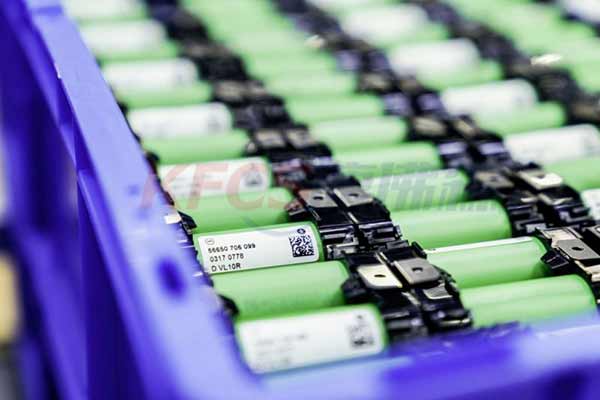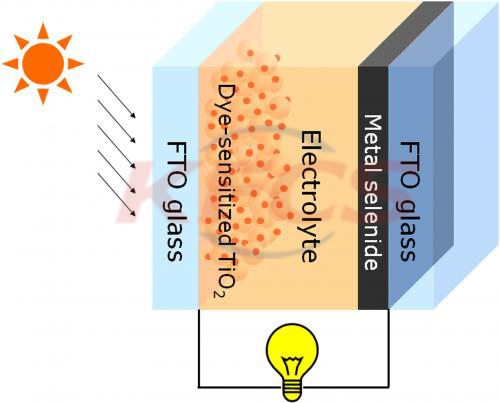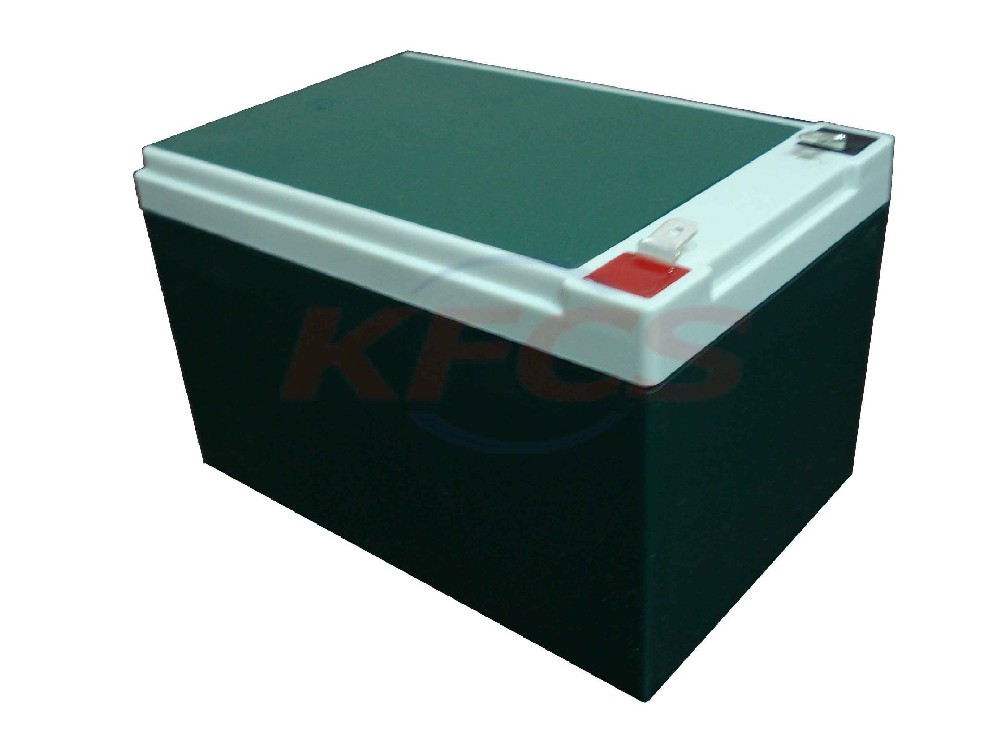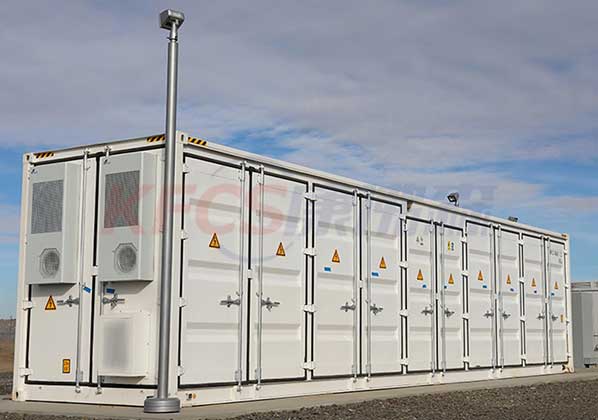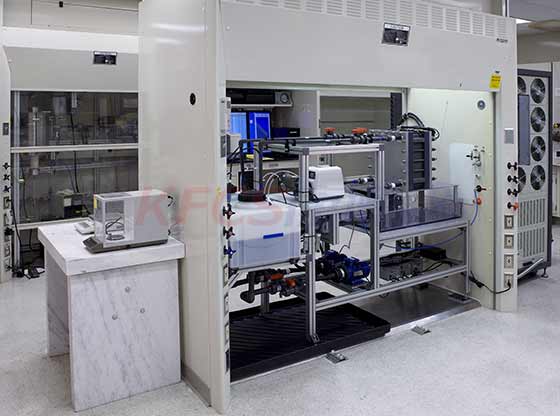Make energy "access" easier
2022-02-17
Energy is everywhere, but energy supply is still in short supply. The vast northwest region contains a lot of renewable energy such as "wind" and "light", but these energy sources are often too far away from the cities that are in the center of energy consumption. At present, realizing the long-distance transmission of energy seems to be the best choice to solve the contradiction.
For a long time, transmission lines and power stations have acted as energy "porters", but there are always hurdles that are difficult to cross. In order to achieve a more flexible power supply, researchers hope to build a bridge between energy collection and utilization, and innovate energy storage methods.
Li Xianfeng, a researcher at the Dalian Institute of Chemical Physics, Chinese Academy of Sciences (hereinafter referred to as Dalian Institute of Chemical Physics), has been working in the field of flow batteries for more than 20 years. Recently, the "New Generation Flow Battery Energy Storage Technology and Industrialization Team" led by the team won the 2021 Chinese Academy of Sciences Science and Technology Promotion Award.
"Different from traditional batteries, flow batteries store liquid electrolytes externally, and the energy storage medium is an aqueous solution, with no risk of fire and explosion, high safety, and long service life. The field of system energy storage has broad application prospects." Li Xianfeng told the "Science China Journal".
Break out from inside the battery
The battery seems to be a black box, but it actually has a complex structure inside, mainly composed of key materials and core components such as diaphragms, bipolar plates, and electrodes. "Improving the performance of energy storage batteries needs to take into account both parts and the whole, and the R&D process needs to consider the interaction and influence of multiple factors." Li Xianfeng said.
The membrane material mainly plays the role of blocking the positive and negative electrodes and transporting ions. "The higher the ionic conductivity of the membrane, the faster the passage of protons, but the ion selectivity will become worse, causing the ions on both sides of the membrane to 'shuttle' to each other, increasing the side reactions of the battery and affecting the performance of the battery." Dalian Institute of Chemical Physics Senior engineer Shi Ding Qin said. Therefore, how to balance the ionic conductivity and ionic selectivity of the membrane. It is a key technical problem to be solved by researchers to develop a new type of diaphragm material that combines both.
In order to prevent ions from shuttling from one side of the membrane to the other, researchers have devoted themselves to the study of the membrane ion transport mechanism. By cutting off the transport path of ions within the membrane, the membrane ion selectivity is improved. However, this method still cannot completely solve the problem of balance between the two.
During the research process, Li Xianfeng's team found that the radii of different ions in the electrolyte of the flow battery are different. "Can the selective transmission of ions be achieved by regulating the pore size of the membrane?" With this idea, the team set foot on A new journey to develop porous ion-conducting membrane materials.
The micro world is complex and changeable, and it is difficult to control and control. After a long period of research, no breakthrough has been achieved, but the team's belief has never been shaken. In the end, they started from the innovative molecular structure, broke through the balance between membrane ion conductivity and ion selectivity, prepared porous ion-conducting membrane materials with high selectivity, high conductivity and low cost, and successfully achieved mass production.
The bipolar plate is another key material of the battery, which plays the role of connecting each single cell in series to form a stack and current collector. Similar to membrane materials, bipolar plate materials also face the contradiction of "double height". "The higher the carbon content, the stronger the conductivity, but the toughness will become worse, which is not conducive to the compact assembly of the stack." said Dr. Liu Tao from the Dalian Institute of Chemical Physics, the development of new bipolar plate materials with high conductivity and high toughness is the team's work. The main attack target.
In recent years, the team has focused on the innovation and structural design of bipolar plate materials, and has successfully built a more developed conductive network by melting multi-scale and multi-dimensional carbon powder particles into the polymer toughening network.
However, there are countless carbon powder and polymer materials on the market, and how to find the best materials and ratios from the numerous materials is an urgent problem to be solved. The team has tried thousands of recipes for this. "Even if the formula is determined, it is still not enough to meet the needs of practical applications. It is necessary to ensure the needs of preparation and large-scale production, improve the production efficiency of materials and reduce costs." Liu Tao said.
To this end, the team continued to explore and try in scale-up and mass production processes, and finally developed a new type of carbon-plastic composite bipolar plate with high conductivity, high toughness, and weldability, and achieved mass production.
Calculate the power
Whether the stack is good or not depends on the discharge power and efficiency. High efficiency can ensure that more power is released under the same stored power. But all batteries have losses during charging and discharging. "1 kWh of electricity is stored, and 0.8 kWh of electricity is released. The electricity that disappears out of thin air is loss." Zheng Qiong, an associate researcher at the Dalian Institute of Chemical Physics, gave an example.
After the successful development of diaphragm and bipolar plate materials with excellent performance, the next step is to do everything possible to optimize the stack structure and process, and strive to minimize the loss and increase the power to a greater extent.
Power is determined by current and voltage. Theoretically, with the same voltage, increasing the current increases the power, but all batteries suffer from polarization problems. Xing Feng, an associate researcher at the Dalian Institute of Chemical Physics, introduced that the existence of "polarization" makes the battery power increase while its efficiency decreases. Therefore, researchers are eager to increase the current and increase the power, while the stack can always be in a high-efficiency operation state.
In scientific research, Xing Feng added an "occupational disease" - love to settle accounts. "Increasing power, improving efficiency, and reducing costs, the core is to control polarization, and it is necessary to continuously simulate and calculate the details." Xing Feng said.
In practical work, the battery polarization will not be equal to zero, but can only be continuously reduced through technological improvements. "The efficiency of the stack will be higher only if the reaction in the battery and every detail in the transfer process are carefully thought out," said Xing Feng.
The electric stack is to the battery system like the heart is to the human body. It has important functions, complex structure, and tedious debugging and optimization work, which affects the whole body. Often this indicator is improved, but other indicators are low, and it is difficult to achieve a comprehensive improvement in indicators.
At the beginning, the team could only make stacks with a power of less than 1 kilowatt, and the cost was high, far below the market entry threshold. Today, the team has developed a new generation of 30-kilowatt high-power density stacks, which nearly doubles the power density and reduces the cost by nearly 40%. It is already in the early stages of commercialization and industrialization.
Today, industrialization is in full swing. The team used laser welding technology to achieve direct sealing between the porous ion-conducting membrane and the electrode frame, getting rid of the dependence on the sealing gasket between the internal components of the stack, and improving the reliability and assembly level of the stack. "The new generation of all-vanadium redox flow battery technology has begun to take shape, and it will continue to be developed and promoted." Li Xianfeng said.
Serving the construction of new power system
The electrolyte is the "blood" of the battery's operation, and vanadium ions are the type of electrolyte that the team is very optimistic about. This ion has 4 valence states, and the vanadium ions in different valence states can be reversibly converted to complete the cycle of charging, discharging and recharging. At the same time, the water-based all-vanadium redox flow battery is composed of vanadium ions, which can greatly reduce the risk of fire and explosion, and is extremely safe.
The study found that the all-vanadium redox flow battery can be freely combined into a battery pack, its output power can reach hundreds of megawatts, its energy storage capacity can reach hundreds of megawatt hours, and it can store 100,000 kWh of electricity.
Dalian Rongke Energy Storage Technology Development Co., Ltd. (hereinafter referred to as Dalian Rongke) is an enterprise focusing on the industrialization of all-vanadium redox flow battery energy storage technology established relying on the technology of Dalian Chemical Institute. The two parties have been in-depth cooperation to jointly promote the commercialization of the all-vanadium redox flow battery demonstration project, which has verified the feasibility of the laboratory results.
In 2016, based on the technical support of the team, Dalian Rongke undertook the construction task of the national demonstration project of the world's largest power all-vanadium redox flow battery energy storage peak-shaving power station. In 2020, the team launched a new generation of all-vanadium redox flow battery technology 30-kilowatt-class stack, which has won many praises, and many interested partners came here. At present, the team has established cooperative intentions with many domestic and foreign companies, and the team's all-vanadium redox flow battery technology has occupied more than 60% of the market.
In the process of industrialization, the team found that enterprises have strong research and development needs. To this end, the team expanded the dimension of cooperation, established laboratories in the enterprise, and built a joint research and development platform. "The market needs to grow on the petri dish of scientific research from the beginning." said Wang Xiaoli, deputy general manager of Dalian Rongke.
Industrial development, standards first. The team also took the lead in formulating more than 20 standards, including the first international standard for flow batteries, which improved the international voice of my country's flow battery technology.
"In the final analysis, the all-vanadium redox flow battery solves the problem of storing surplus electric energy on the power generation side. From a long-term development perspective, it is also necessary to solve the problem of energy storage on the user side." said Yuan Zhizhang, a researcher at the Dalian Institute of Chemistry.
Solving user-side needs with zinc-based flow batteries is another direction of the team's industrialization. The zinc reserves are large, the cost is low, the potential is low, and the energy density is high. However, during the long cycle of the zinc-based flow battery, the reactant ions in the electrolyte are more likely to diffuse to the protrusions on the electrode surface to form zinc dendrites. The continuous growth of the cell will puncture the separator and eventually cause the battery to short-circuit and fail.
Therefore, the problem of zinc dendrite formation and growth must be solved before the real application of zinc-based flow batteries can be realized. After years of research, the team has developed a new type of electrode material, which can effectively control the morphology of zinc deposition, solve the problem of zinc dendrite formation and growth, and make zinc-based flow batteries one step closer to large-scale application.
Li Xianfeng said that carbon peaking and carbon neutrality have brought greater challenges to the existing power system. The development of large-scale energy storage technology and the coupling of power generated by new energy to the existing power system will make power transmission more efficient. , electricity is more accessible, thus helping to build a new power system with new energy as the main body.
About News
- Cold sintering may open door to improved solid-state battery production
- World's largest lithium-vanadium hybrid energy storage system starts up at Oxford Energy Centre
- Ultra-high-purity lithium can be recycled at low cost
- Application of vanadium in all vanadium redox flow battery
- Why are energy storage projects important now?
- Major Strengths of Vanadium Redox Flow Battery
- American Vanadium commits to supply CellCube with 3 million liters of vanadium electrolyte per year over the next five years
- Lithium battery processing equipment is used for crushing device for scrapped lithium ion power battery
- What is a vanadium battery?
- What is the difference between monocrystalline silicon solar cells and polycrystalline silicon solar cells?
Products



